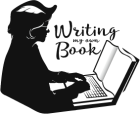Just as first person subjective point of view is very similar to third person subjective, third person objective viewpoint is essentially the same as first person objective. The primary difference is in the use of names and pronouns instead of ‘I.’
This is one of the least used of viewpoints, yet it has an important role if switching from one person’s mind to another is necessary for telling your story effectively. I covered using an objective sleeve in Third Person Subjective Viewpoint: She tells her story. Read the article here. The same technique applies when switching who the ‘hero’ in the story is.
Advantages of Third Person Objective Point of View
In this perspective, you may choose to have multiple heroes, though two is easiest to manage. More than two, and readers find themselves confused.
Disadvantages of Third Person Objective Point of View
This viewpoint distances your reader from your hero. ![]() This content is for members only.
This content is for members only.
Example of Third Person Objective Point of View
As you can see in the following example, the only real changes are trading ‘I’ for ‘Gordon’ or ‘he.’ Me becomes ‘her husband,’ ‘him’ or ‘Gordon.’ (I’ve cut the example short.)
Note: In this example, we’re only seeing into Gordon’s thoughts. We could also allow readers to see into Denise’s thoughts. However, when you choose to reveal the thoughts of two of your characters you must be careful to keep the transitions between characters clear.
Summary
Third person objective viewpoint is especially useful when telling the story of a larger-than-life character. It can also be used in tandem with third person subjective viewpoint to reveal the hero’s view of him or herself versus the perspective of the person telling the story.

